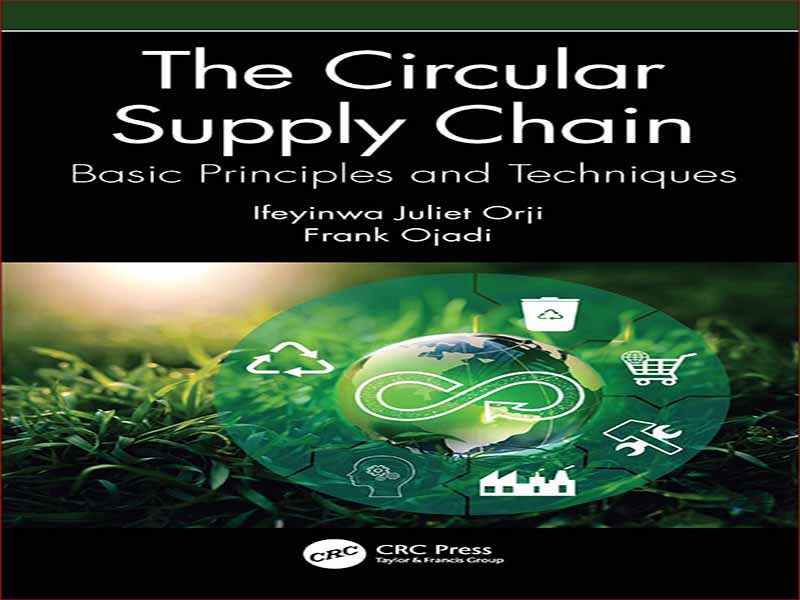- عنوان: The Circular Supply Chain Basic Principles and Techniques
- نویسنده: IFEYINWA JULIET. OJADI ORJI
- حوزه: زنجیره تامین
- سال انتشار: 2022
- تعداد صفحه: 329
- زبان اصلی: انگلیسی
- نوع فایل: pdf
- حجم فایل: 9.87 مگابایت
اقتصاد جهانی در سالهای 2019 و 2020 به ترتیب 9.1 و 8.6 درصد دایرهای بود که شکاف دایرهای عظیم و در حال گسترش را نشان میدهد. بدتر شدن شکاف دایرهای نشاندهنده تداوم سنت تولید و مصرف در اقتصاد خطی است که باعث افزایش نرخ بالای استخراج منابع، هدر رفت مواد بیپایان و سطوح پایین پردازش و دوچرخهسواری نهایی میشود. از آنجایی که جهان به مصرف سالانه 100 میلیارد تن (Gt) مواد ادامه می دهد، چشم انداز آینده تاسف بار است زیرا اقتصاد جهانی در حال عبور از چندین نقطه عطف است. بخش تولید یکی از شرورهای بدنام در شکاف دایره ای در حال افزایش است. بخش تولید به عنوان فضایی با منابع فشرده، بزرگترین ردپای اکولوژیکی را دارد. فرآیندها و محصولات تکنیکهای تولید، مقدار قابلتوجهی از مواد بکر را تخلیه میکنند، انرژی بیش از حد مصرف میکنند، مقادیر بسیار زیادی گازهای گلخانهای منتشر میکنند و مقادیر قابلتوجهی زبالههای دفن زباله جامد تولید میکنند. ماهیت اتلاف بخش و شکاف دایرهای بخش تولید در اقتصادهای نوظهور مانند چین، با فعالیتهای تولیدی عظیم که در آن زبالههای تولیدی درصد زیادی از زبالههای دفن زباله را تشکیل میدهند، بارزتر است. به طور معمول، کسب و کار معمول در صنعت تولید، مدل اقتصاد خطی تولید و مصرف مواد را در بر می گیرد. بنابراین، دلیل اصلی شکافهای دایرهای عظیم در بخش تولید، تسلط تکنیکهای تولیدی است که بر اساس سنت ضایعات مصرفی اقتصاد خطی عمل میکند. ¬
The global economy was 9.1% and 8.6% circular in 2019 and 2020, respectively, highlighting a massive and expanding circularity gap. The worsening circularity gap demonstrates the persistence of the linear economy’s take-make-dispose production and consumption tradition, which promotes high rates of resources extractions, unending material wastages and low levels of end-of-use processing and cycling. As the world continues to consume 100 billion tonnes (Gt) of materials annually, the future outlook is grim because the global economy is breaching several milestones. The manufacturing sector is one of the notorious villains in the widening circularity gap. As a resource-intensive space, the manufacturing sector has the largest ecological footprint. The processes and products of the manufacturing techniques deplete a significant amount of virgin materials, consume excessive energy, emit prohibitive quantities of greenhouse gases and generate significant quantities of solid landfill wastes. The manufacturing sector’s wasteful nature and circularity gap are even more pronounced in emerging economies like China, with tremendous manufacturing activities where manufacturing wastes account for a huge percentage of landfill wastes. Typically, business-as-usual in the manufacturing industry encompasses the linear economy model of materials production and consumption. Therefore, the main reason for the manufacturing sector’s massive circularity gaps is the dominance of manufacturing techniques that operates based on the take-make-waste tradition of the linear economy.
این کتاب را میتوانید بصورت رایگان از لینک زیر دانلود نمایید.
Download: The Circular Supply Chain Basic Principles and Techniques



































نظرات کاربران